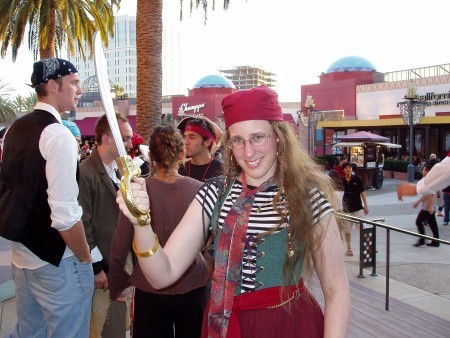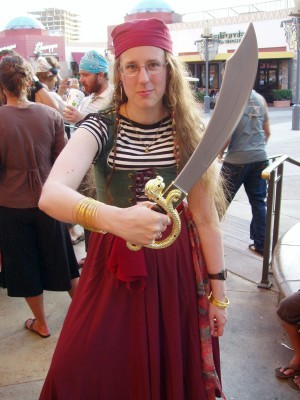Friday: Goo Goo Dolls/ Counting Crows concert at it’s-still-Irvine-Meadows-’cause-“Verizon-Wireless-Amphitheater”-just-sounds-dumb. Nifty view of the central Orange County valley before the sun set.
Saturday. Spent the day lying on the couch with a fan running, catching up on the Babylon 5 script book commentaries. So far I’ve only read about 1/4 of one script, but the introductions are a fascinating insight into the process of making the show. Given how much was out in the open (since JMS spent several hours a night online during production), some of the stuff that wasn’t revealed back then is mighty interesting. (Example: we all thought season 4 was compressed because they weren’t sure they’d get a season 5, and wanted to get as much done as they could. It turns out that at the beginning of the season, they were told in no uncertain terms that there would not be a season 5. So getting that fifth season on TNT was a real surprise.)
Dinner at CPK, then Superman Returns Enjoyed it, but no interest in seeing it again. It already felt like deja vu since there were so many references to the first two movies with Christopher Reeve. There were some great moments, but overall it was just kind of okay.
Sunday: Finished Bad Twin. Decent book, but not exactly a major insight into the secrets of Lost. Waited several hours until checking my email, at which point I discovered I really should’ve checked earlier… so I could bring a server back online. Went down to the office, brought the server up. alenxa tagged along and we had lunch at the crepe place at the Spectrum. Happened to glance over at one of the wall alcoves, which held a vinegar bottle… labeled Temeraire. After some shopping for food for upcoming family get-togethers, went home and played Heroes V for a few hours. Fortunately I was still awake when the same server went down again at 1AM. So I drove back, brought it online, figured out a way to make sure that it would automatically start up again next time, then came home. Still trying to diagnose the cause, but whatever it is does seem to like holiday weekends…
Monday: Traditionally, the 4th of July consists of hanging around at home followed by looking for fireworks. This year, both our families wanted to get together. So on Monday we went to visit my grandparents, carpooling with my parents and my brother. My aunt and her husband brought their dogs, which meant I spent most of the afternoon in a Benadryl-induced funk, despite drinking way too much Dr. Pepper to offset it.
Tuesday: I squeezed in an hour or two of Heroes in the morning, then it was off to visit Katie’s family, with more BBQ. Dinner was relatively early, so we cleared out around 7:00 so we could make it back to Laguna Beach for the fireworks display there. They launch the fireworks off one of the bluffs, out over the ocean, and the viewing is pretty good from the beach. We caught the tail end of it a couple of years ago, while driving around looking for displays. Two years ago we got there too late and missed the entire show while we walked from the car out to the beach. (Hey, have you ever tried finding parking in Laguna Beach?) Last year I was sick, so we just walked out to where we could see the local display. This year we made it with plenty of time to spare, parking up on Forest (roughly in line with the Laguna Playhouse, and maybe a few hundred feet from the entrance to Tivoli Terrace, where we had our wedding), and snagged a spot on the beach. The wind blew the smoke in our direction, so a lot of the fireworks were half-obscured, but they lit up the smoke a lot more than I can remember seeing anywhere else. After the show, we did our semi-traditional stop at Diedrich across the street.
Today: Back to work. I’ve been stress-testing the server, trying to get it to crash under controlled circumstances so I can get some information about what’s causing the problem… and it just won’t crash!



